I am so confused with image Normalization, and image Range, and image Scaling. I am using an algorithm (I have upload the algorithm in my Previous Question), and after applying the algorithm I am using this formula from wikipedia to normalize the images:

using getrangefromclass(filtImag1{i}) from MATLAB, the range of matrices before applying the algorithm is [0 255] and after applying the algorithm the range is [0 1].
the problem is I need to find a reference to find out if the normalization formula is correct or not? also I have 5 stacks of images each containing 600 images. I have applied the algorithm for each stack, and because the result of algorithm is 10 images for each stack, I will end up with 50 images that I need to analysis and compare them together. I find the max and the min of the 50 images , and then pass each image into the formula to normalize the image.
although the range of the images is [0 1] but the max of the image is : max = 3.6714e+004
why? shouldn't it be 1? is this the right way of normalization? how can I apply scaling ? do I need to do it?
here is the normalization code :
%%%%%%%%%%%%%%Find Min and Max between the results%%%%%%%%%%%%%%%%%%%%%%%
pre_max = max(filtImag1{1}(:));
for i=1:10
new_max = max(filtImag1{i}(:));
if (pre_max<new_max)
pre_max=max(filtImag1{i}(:));
end
end
new_max = pre_max;
pre_min = min(filtImag1{1}(:));
for i=1:10
new_min = min(filtImag1{i}(:));
if (pre_min>new_min)
pre_min = min(filtImag1{i}(:));
end
end
new_min = pre_min;
%%%%%%%%%%%%%%normalization %%%%%%%%%%%%%%%%%%%%%%%
for i=1:10
temp_imag = filtImag1{i}(:,:);
x=isnan(temp_imag);
temp_imag(x)=0;
t_max = max(max(temp_imag));
t_min = min(min(temp_imag));
temp_imag = (double(temp_imag-t_min)).*((double(new_max)-double(new_min))/double(t_max-t_min))+(double(new_min));
imag_test2{i}(:,:) = temp_imag;
end
EDIT I have change the code based on suggested answers but the result is black image
%find the max and min between them pre_max = max(sTStack{1}(:)); for i=1:40 newMax = max(sTStack{i}(:)); if (pre_max
pre_min = min(sTStack{1}(:)); for i=1:40 newMin = min(sTStack{i}(:)); if (pre_min>newMin) pre_min = min(sTStack{i}(:)); end end t_min = pre_min;
%%%%%%%%%%%%%%%%%%%%%%% Normalize the Image:%%%%%%%%%%%%%%%%%%%%%%%%%%%%
for i=1:40 NTstack{i} = (sTStack{i} - t_min)/(t_max-t_min); end
for i=10:10:40 figure,imshow(NTstack{i}); colorbar colormap jet end

